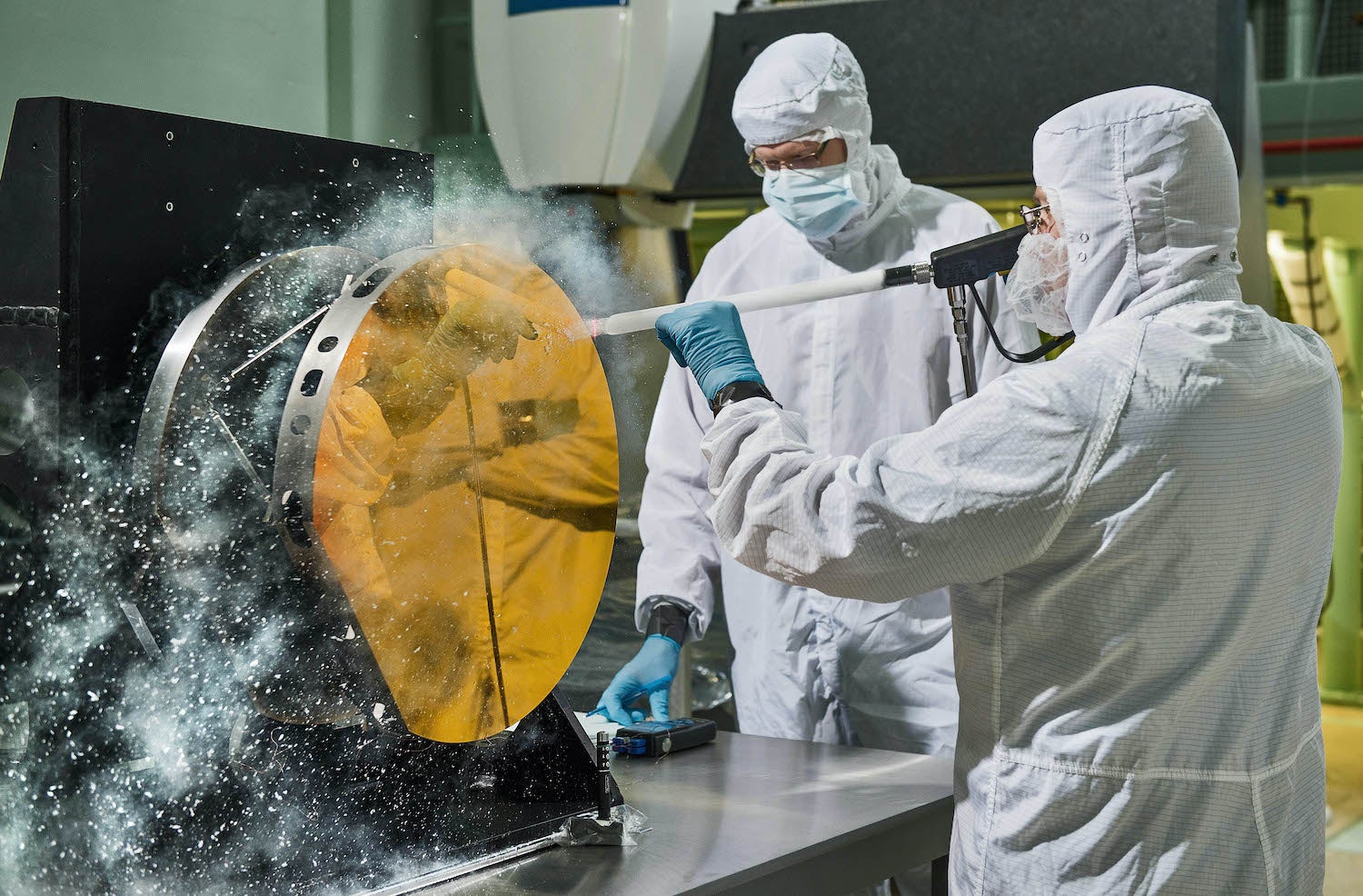
One appeal of astro-observing is that we’re inspecting a vast realm where nothing is sloppily arranged or in need of vacuuming — though the Moon’s southern highlands are admittedly a crowded mess, with many craters piled partially atop others.
Then there’s Mars, whose dry and dusty landscape has terminated numerous martian missions, albeit long past their expected use-by date. Dust caked on the solar panels of the InSight lander recently brought that mission to an end, and while the Spirit and Opportunity rovers were lucky enough to have dust devils give their solar panels quick and timely scours, dust eventually did them both in.
But rather than sloppiness imposed by nature, let’s talk about whether it matters if you’re a Class 3 slob after you spent your savings on a telescope. It’s fine not to wax and polish our telescope tubes, but how much neglect constitutes negligence?
Generally, I’ll only get rid of observatory objects that move of their own volition, like wasps and snakes. But what about, say, fallen leaves? Do they do any harm other than providing an odd, crunchy soundtrack when stepped on? Leave them until they’re ankle deep!
The classic telescope cleanliness issue is tolerance to dust, which is highly visible on objective lenses and mirrors. Remembering those martian mishaps, is earthly dust a similar threat? When my 12.5-inch f/6 mirror gets really dusty — like around now, a quarter-century since I last cleaned it — is it finally time?
The process initially sounds delicate but not overly complicated. Place the mirror shiny side up on a towel in a kitchen sink, letting a stream of water run over it, and lightly swirl cotton balls over it after they’ve been soaked in a detergent such as Tide. But then comes the Ph.D.-necessitating issue of how to dry it. That’s where art and science meet, since proper drying determines whether you’re left with image-marring sleeks or a perfect mirror that can be safely ignored until the next solar totality darkens Walt Disney World in 2045.
What about eyepieces? Your Type A, never-miss-a-spot-while-shaving astronomers have them arranged by focal length in a dustproof box. At the other extreme are those who stuff them in their jacket pocket. Is this bad? Pockets let lint hit the lenses, but you can blow it off easily enough. And the field lens is so deeply recessed that it won’t be struck by the metal parts of other eyepieces. So maybe it’s okay to wear your optics — at least, the cheap orthoscopic eyepieces with tiny eye lenses.
Fingers on lenses are another matter. They truly don’t mix — and we’re not just being fussy, like those who feel the need to use a knife and fork to eat burgers or pizza. It’s not a mere matter of appearance: The oils on our hands should never touch the optics.
But dust looks much worse than it is because it rarely impairs a scope’s performance. So, should we be laissez-faire about it? The question might take you back to age 12, when your grandmother insisted that you stop tossing your socks on the floor at bedtime while your instincts told you that socks belong on the floor during hours of darkness. In truth, dust can usually be ignored.
And being laid back while probing infinity has its own benefits. Nobel Prizes have been awarded for accidental discoveries and those made by goof-offs. Nothing’s inherently wrong with slobbery. The true bottom line, and one of astronomy’s fundamental appeals, is that the cosmos is OK with its denizens being true to themselves.









